Right Triangle Calculator lets you find sides, angles, area, and perimeter quickly. Easy, accurate tool for geometry, trigonometry, and math problems.
Right Triangle Calculator
A right triangle is a fundamental geometric shape with one angle measuring exactly 90 degrees. Whether you’re a student tackling geometry problems, an engineer designing structures, or a DIY enthusiast working on home projects, understanding how to calculate the properties of right triangles is an essential skill. This comprehensive guide will walk you through everything you need to know about right triangle calculations, from basic principles to practical applications.
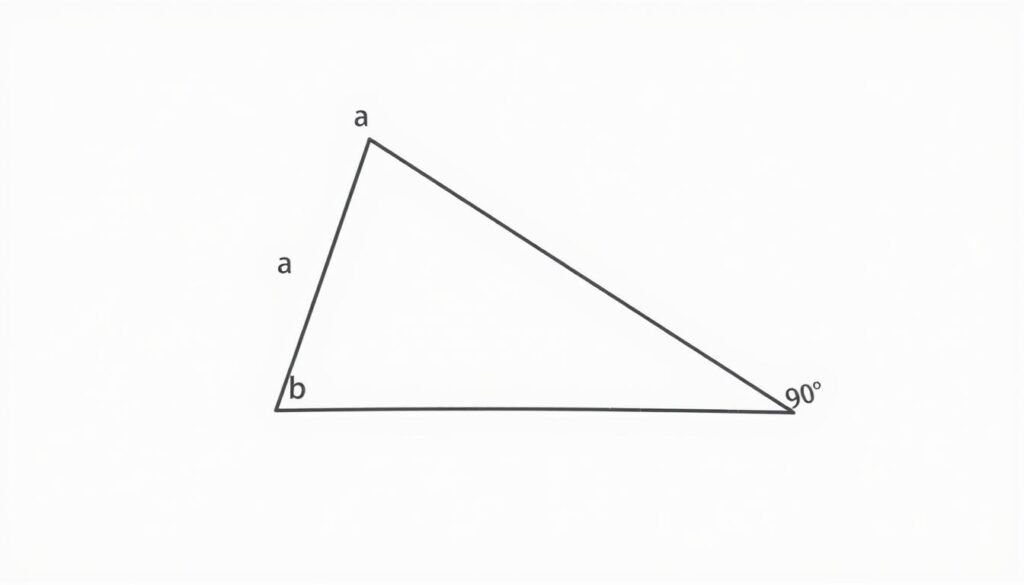
Understanding Right Triangles: The Basics
A right triangle contains one 90-degree angle (the right angle) and two acute angles that sum to 90 degrees. The side opposite to the right angle is called the hypotenuse and is always the longest side of the triangle. The other two sides are referred to as legs or catheti.
Key Properties of Right Triangles
- One angle is exactly 90 degrees (the right angle)
- The other two angles are acute (less than 90°) and sum to 90°
- The hypotenuse is always the longest side
- The Pythagorean theorem applies to all right triangles
- Trigonometric functions can be used to find unknown sides and angles

Notation Used in Right Triangle Calculations
When working with right triangles, we typically use the following notation:
- a, b – The lengths of the two legs (sides adjacent to the right angle)
- c – The length of the hypotenuse (side opposite to the right angle)
- α, β – The two acute angles (alpha and beta)
- γ – The right angle (90°)
The Pythagorean Theorem: Foundation of Right Triangle Calculations
The Pythagorean theorem is the cornerstone of right triangle calculations. It states that in a right triangle, the square of the length of the hypotenuse equals the sum of squares of the lengths of the other two sides.
a² + b² = c²
Using the Pythagorean Theorem to Find the Hypotenuse
If you know the lengths of both legs (a and b), you can find the hypotenuse (c) using:
c = √(a² + b²)
Example Calculation:
Given a = 3 and b = 4, find the hypotenuse c:
c = √(3² + 4²) = √(9 + 16) = √25 = 5
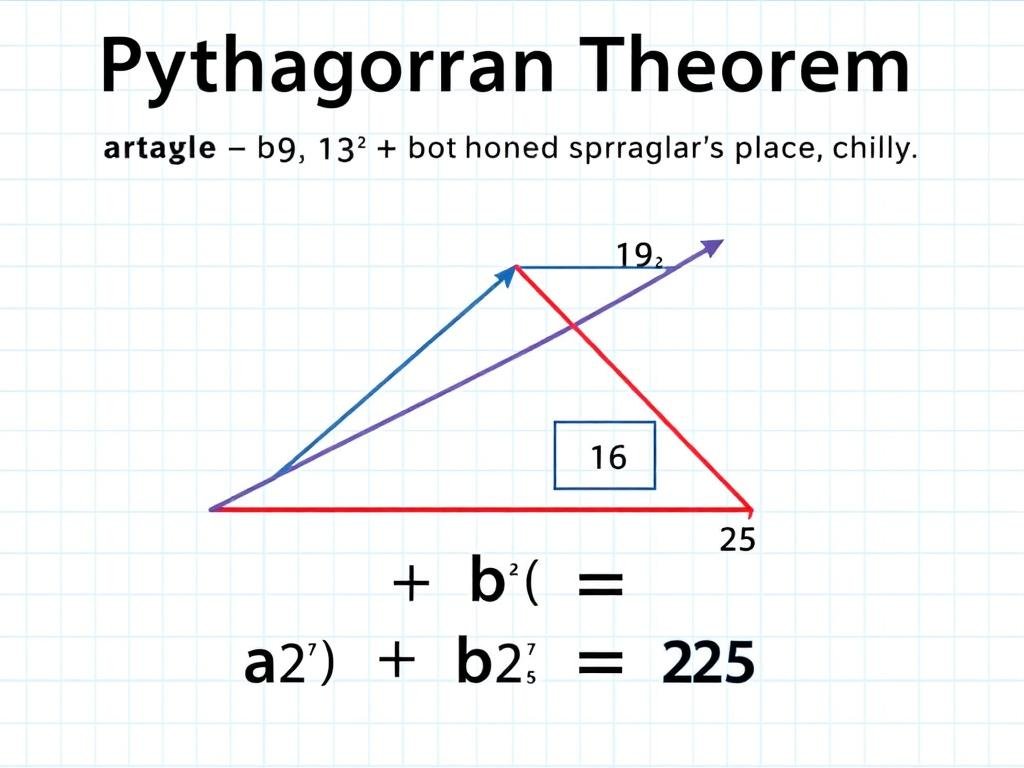
Finding the Legs Using the Pythagorean Theorem
If you know the hypotenuse (c) and one leg (either a or b), you can find the other leg using:
- To find leg a: a = √(c² – b²)
- To find leg b: b = √(c² – a²)
Download Our Pythagorean Theorem Cheat Sheet
Get instant access to our printable reference guide with all Pythagorean theorem formulas and examples for quick calculations.
Trigonometric Ratios in Right Triangles
Trigonometric ratios provide powerful tools for solving right triangles when you know a combination of sides and angles. The three primary trigonometric ratios are sine, cosine, and tangent.
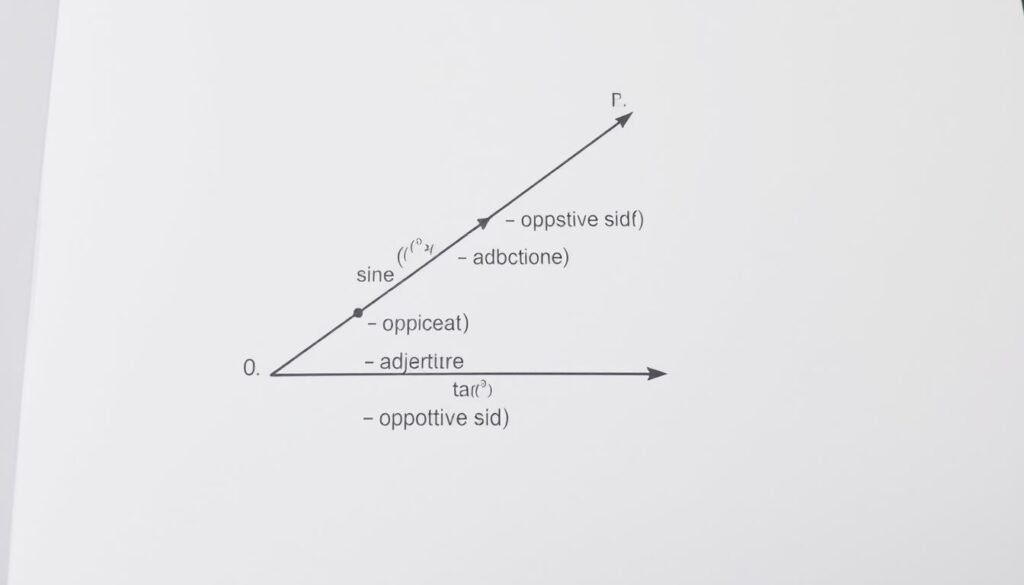
The SOH-CAH-TOA Mnemonic
A helpful way to remember these ratios is the mnemonic SOH-CAH-TOA:
Sine (SOH)
sin(θ) = Opposite / Hypotenuse
Used to find the opposite side when you know the hypotenuse and an angle, or to find an angle when you know the opposite side and hypotenuse.
Cosine (CAH)
cos(θ) = Adjacent / Hypotenuse
Used to find the adjacent side when you know the hypotenuse and an angle, or to find an angle when you know the adjacent side and hypotenuse.
Tangent (TOA)
tan(θ) = Opposite / Adjacent
Used to find the opposite side when you know the adjacent side and an angle, or to find an angle when you know both sides.
Finding Angles Using Inverse Trigonometric Functions
When you know the sides of a right triangle and need to find the angles, you use inverse trigonometric functions:
- θ = sin⁻¹(Opposite / Hypotenuse)
- θ = cos⁻¹(Adjacent / Hypotenuse)
- θ = tan⁻¹(Opposite / Adjacent)
Pro Tip: When solving right triangles, you only need to find one acute angle. Since the sum of all angles in a triangle is 180°, and one angle is 90°, you can find the third angle by subtracting the known angle from 90°.
Step-by-Step Right Triangle Calculation Examples
Example 1: Finding the Hypotenuse and Angles
Given: Legs a = 5 units and b = 12 units
Step 1: Find the hypotenuse using the Pythagorean theorem:
c = √(a² + b²) = √(5² + 12²) = √(25 + 144) = √169 = 13 units
Step 2: Find angle α using the inverse sine function:
α = sin⁻¹(a/c) = sin⁻¹(5/13) ≈ 22.62°
Step 3: Find angle β using the fact that α + β = 90°:
β = 90° – α = 90° – 22.62° = 67.38°

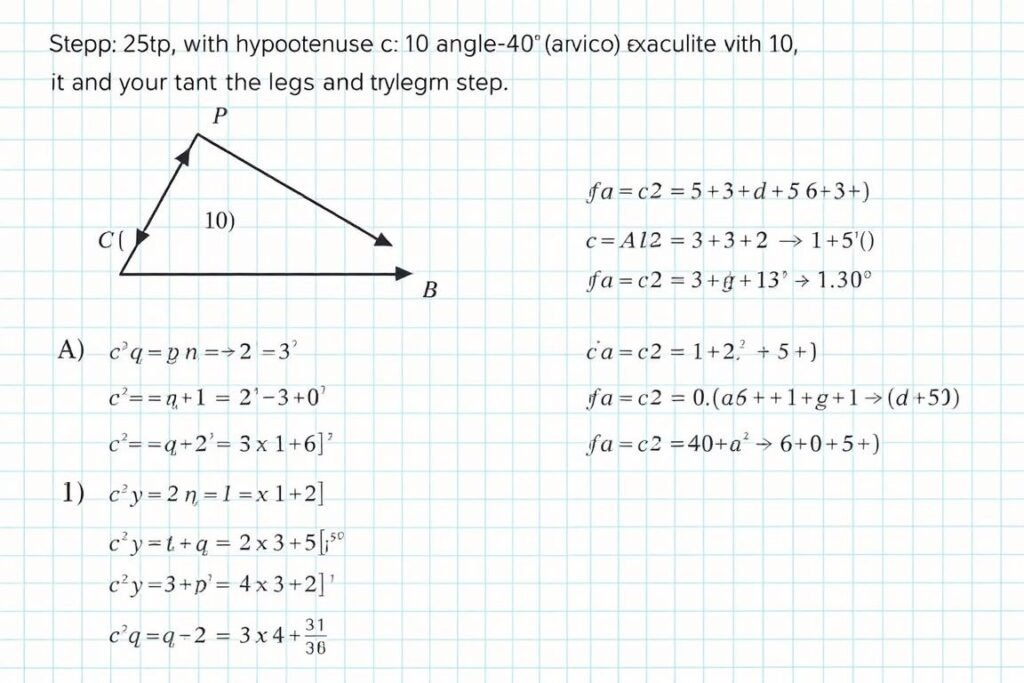
Example 2: Finding the Legs Given Angle and Hypotenuse
Given: Hypotenuse c = 10 units and angle α = 30°
Step 1: Find leg a using the sine function:
a = c × sin(α) = 10 × sin(30°) = 10 × 0.5 = 5 units
Step 2: Find leg b using the cosine function:
b = c × cos(α) = 10 × cos(30°) = 10 × 0.866 = 8.66 units
Step 3: Verify using the Pythagorean theorem:
a² + b² = 5² + 8.66² = 25 + 75 = 100 = c²
Master Right Triangle Calculations
Download our comprehensive Right Triangle Formula Sheet with all the formulas, examples, and shortcuts you need for quick and accurate calculations.
Calculating Area and Perimeter of Right Triangles
Area of a Right Triangle
The area of a right triangle can be calculated using the formula:
Area = (1/2) × a × b
Where a and b are the lengths of the two legs.
Example:
For a right triangle with legs a = 6 and b = 8:
Area = (1/2) × 6 × 8 = 24 square units
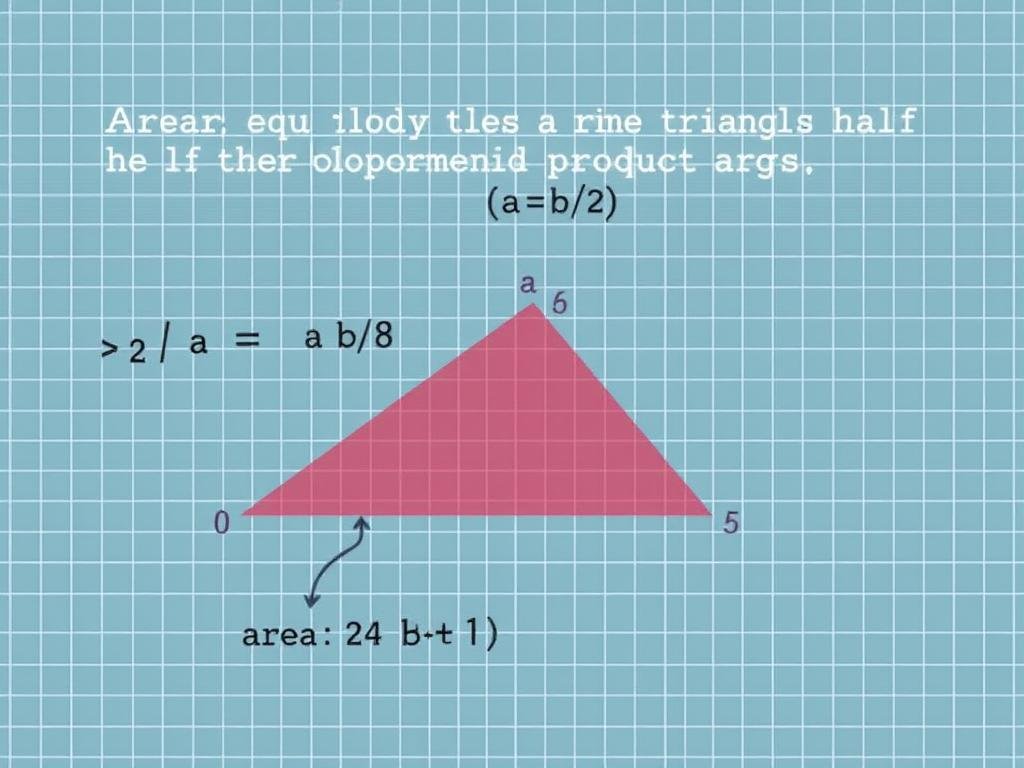
Perimeter of a Right Triangle
The perimeter is the sum of all three sides:
Perimeter = a + b + c
Example:
For a right triangle with legs a = 6, b = 8, and hypotenuse c = 10:
Perimeter = 6 + 8 + 10 = 24 units
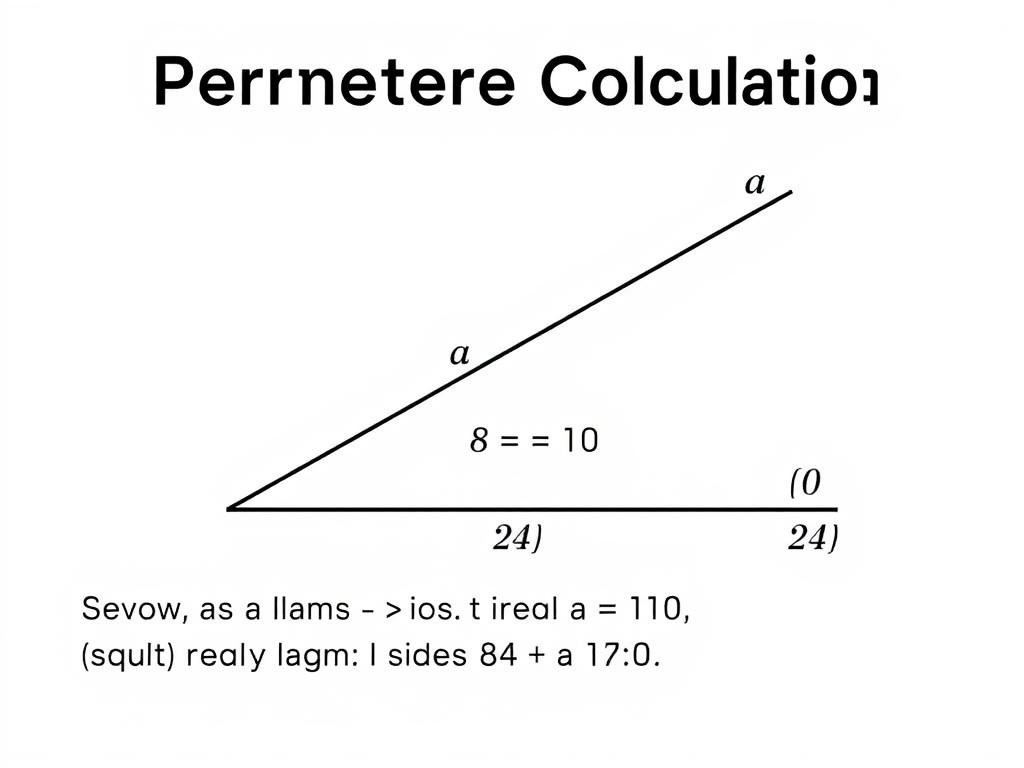
Special Right Triangles
Certain right triangles have special properties that make calculations even easier. The two most common special right triangles are the 30°-60°-90° triangle and the 45°-45°-90° triangle.
30°-60°-90° Triangle
In this triangle, if the shortest leg has length x, then:
- The shortest leg (opposite to 30° angle) = x
- The longer leg (opposite to 60° angle) = x√3
- The hypotenuse (opposite to 90° angle) = 2x
Example:
If the shortest leg is 5 units, then:
Longer leg = 5√3 ≈ 8.66 units
Hypotenuse = 10 units


45°-45°-90° Triangle (Isosceles Right Triangle)
In this triangle, if each leg has length x, then:
- Both legs (opposite to 45° angles) = x
- The hypotenuse (opposite to 90° angle) = x√2
Example:
If each leg is 7 units, then:
Hypotenuse = 7√2 ≈ 9.9 units
Memory Tip: For a 30°-60°-90° triangle, remember the ratio 1:√3:2. For a 45°-45°-90° triangle, remember the ratio 1:1:√2.
Real-World Applications of Right Triangle Calculations
Right triangle calculations are not just academic exercises—they have numerous practical applications in various fields:
Construction & Architecture

- Ensuring walls are perpendicular to floors
- Calculating roof pitches and rafter lengths
- Designing staircases with proper dimensions
- Creating structurally sound trusses
Navigation & Surveying
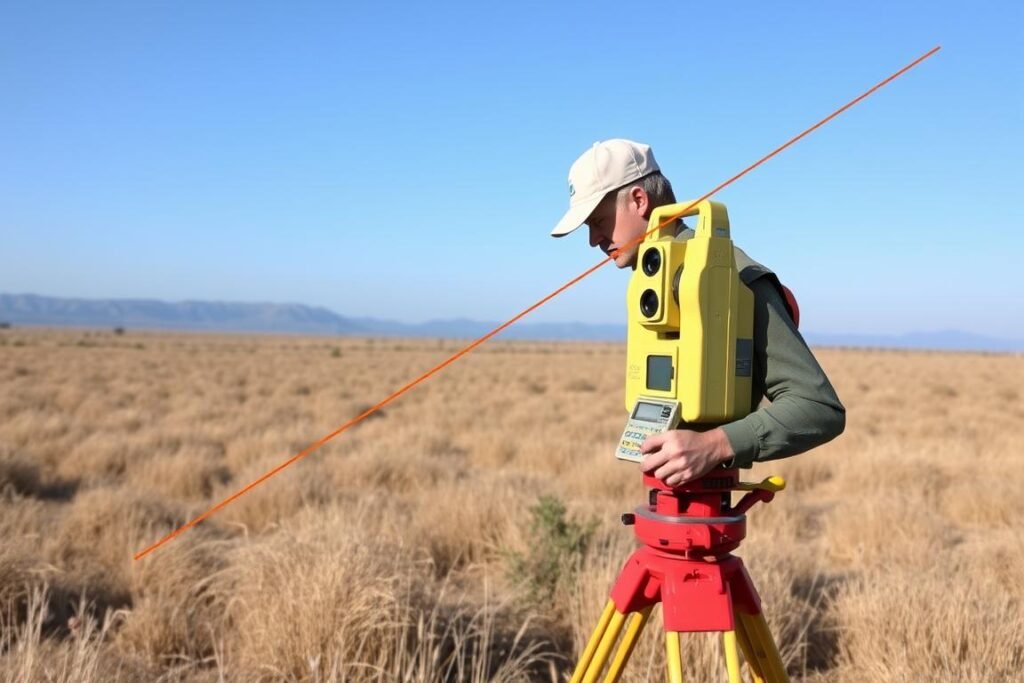
- Calculating distances to inaccessible points
- Determining heights of tall structures
- Mapping terrain and property boundaries
- Navigation using bearings and distances
Physics & Engineering

- Resolving forces into components
- Calculating inclined plane problems
- Determining projectile trajectories
- Designing electrical circuits
Apply Right Triangle Principles Like a Pro
Download our practical application guide with real-world examples and step-by-step solutions for construction, navigation, and engineering problems.
Frequently Asked Questions About Right Triangle Calculations
How do I know which formula to use when solving a right triangle?
The formula you should use depends on what information you already have:
- If you have two sides, use the Pythagorean theorem to find the third side.
- If you have one side and one acute angle, use trigonometric ratios (sine, cosine, tangent).
- If you have the hypotenuse and one acute angle, use sine and cosine functions.
- If you have two legs, you can find the angles using inverse tangent.
Can a right triangle have two right angles?
No, a triangle cannot have two right angles. The sum of all angles in a triangle is always 180°. If one angle is 90° (right angle), the sum of the other two angles must be 90°, making them both acute angles (less than 90°).
What is the 3-4-5 rule in right triangles?
The 3-4-5 rule refers to a special right triangle with sides in the ratio 3:4:5. This is a Pythagorean triple, meaning these three numbers satisfy the Pythagorean theorem: 3² + 4² = 5² (9 + 16 = 25). Construction workers often use this rule to create perfect right angles by measuring 3 units on one side, 4 units on the other, and ensuring the diagonal is exactly 5 units.
How do I find the area of a right triangle if I only know two angles and one side?
If you know one side and two angles of a right triangle (one being 90°), you can:
- Find the third angle (180° minus the sum of the known angles)
- Use trigonometric ratios to find the other two sides
- Calculate the area using the formula Area = (1/2) × a × b, where a and b are the legs
What’s the difference between the hypotenuse and the legs of a right triangle?
In a right triangle, the hypotenuse is the longest side and is always opposite to the right angle (90°). The other two sides, called legs, form the right angle. The hypotenuse is always longer than either of the legs, and according to the Pythagorean theorem, the square of the hypotenuse equals the sum of the squares of the two legs.
Mastering Right Triangle Calculations
Understanding right triangle calculations is a fundamental skill with applications across numerous fields. By mastering the Pythagorean theorem, trigonometric ratios, and special triangle properties, you can solve a wide range of practical problems. Remember that right triangles are the foundation of trigonometry and serve as building blocks for more complex geometric concepts.
Whether you’re a student learning these concepts for the first time, a professional applying them in your work, or simply someone with a curiosity about mathematics, we hope this guide has provided you with a clear understanding of right triangle calculations and their real-world applications.
Take Your Right Triangle Knowledge Everywhere
Download our complete Right Triangle Calculator Guide with all formulas, examples, and applications in one convenient PDF.